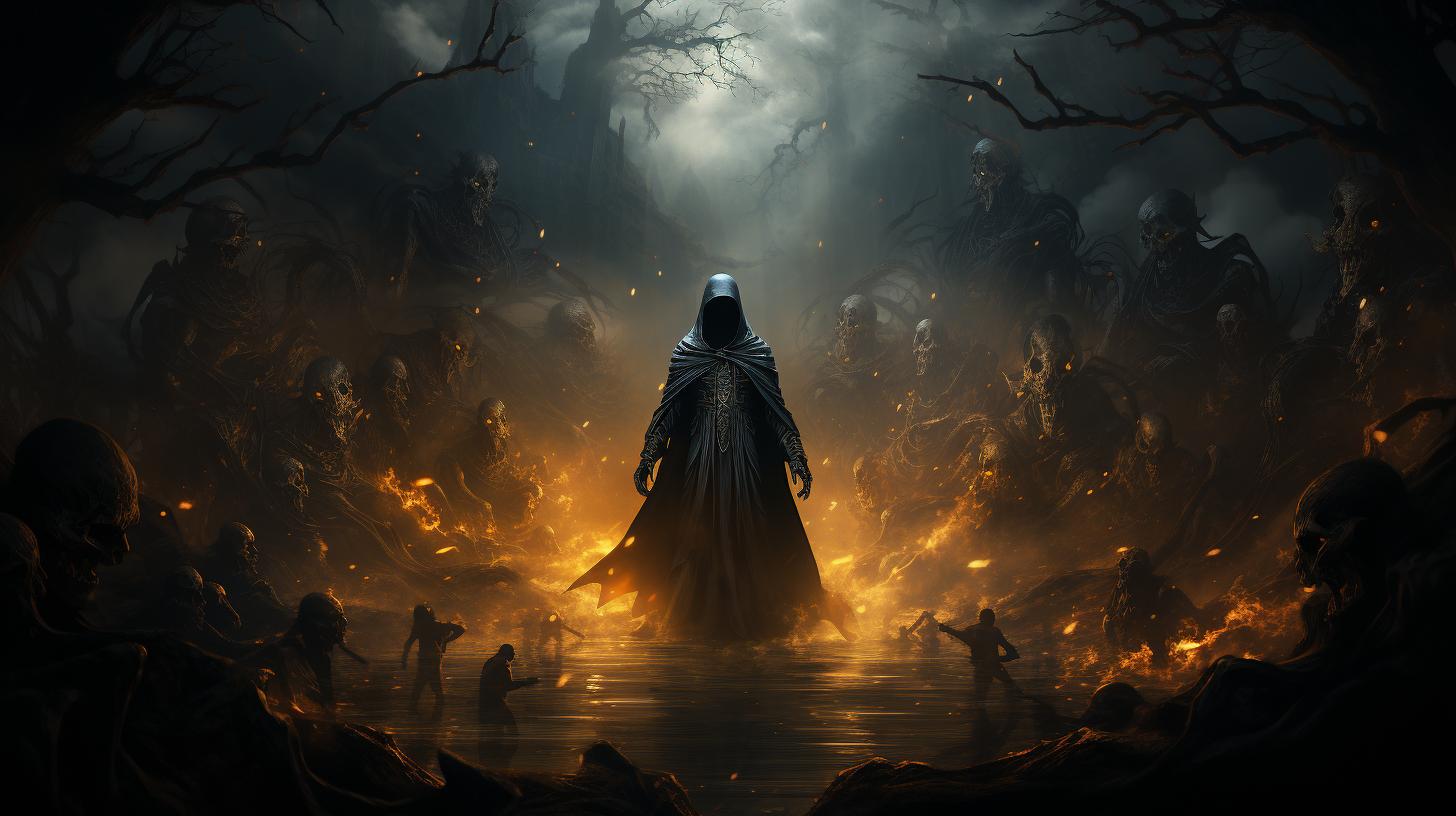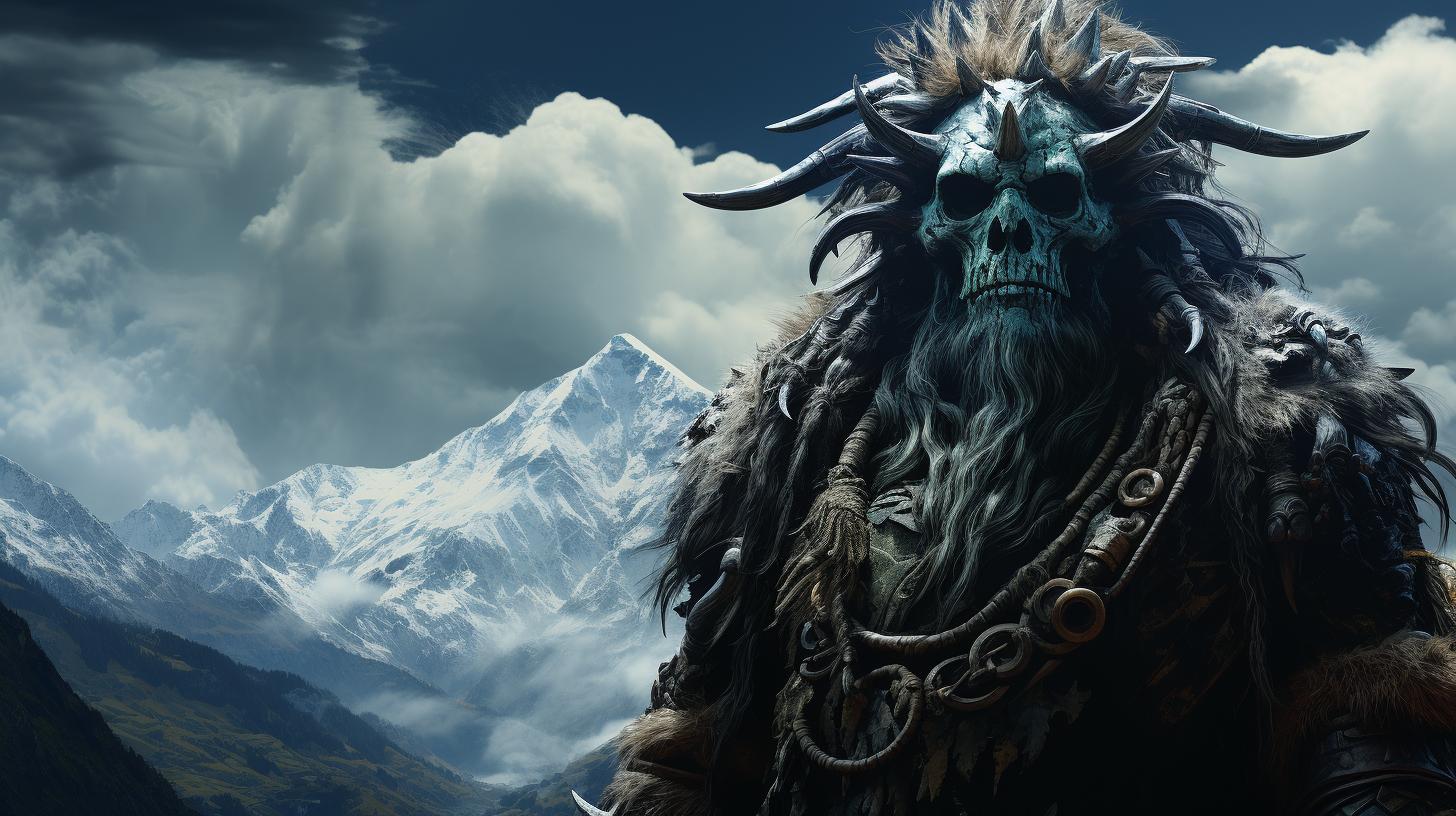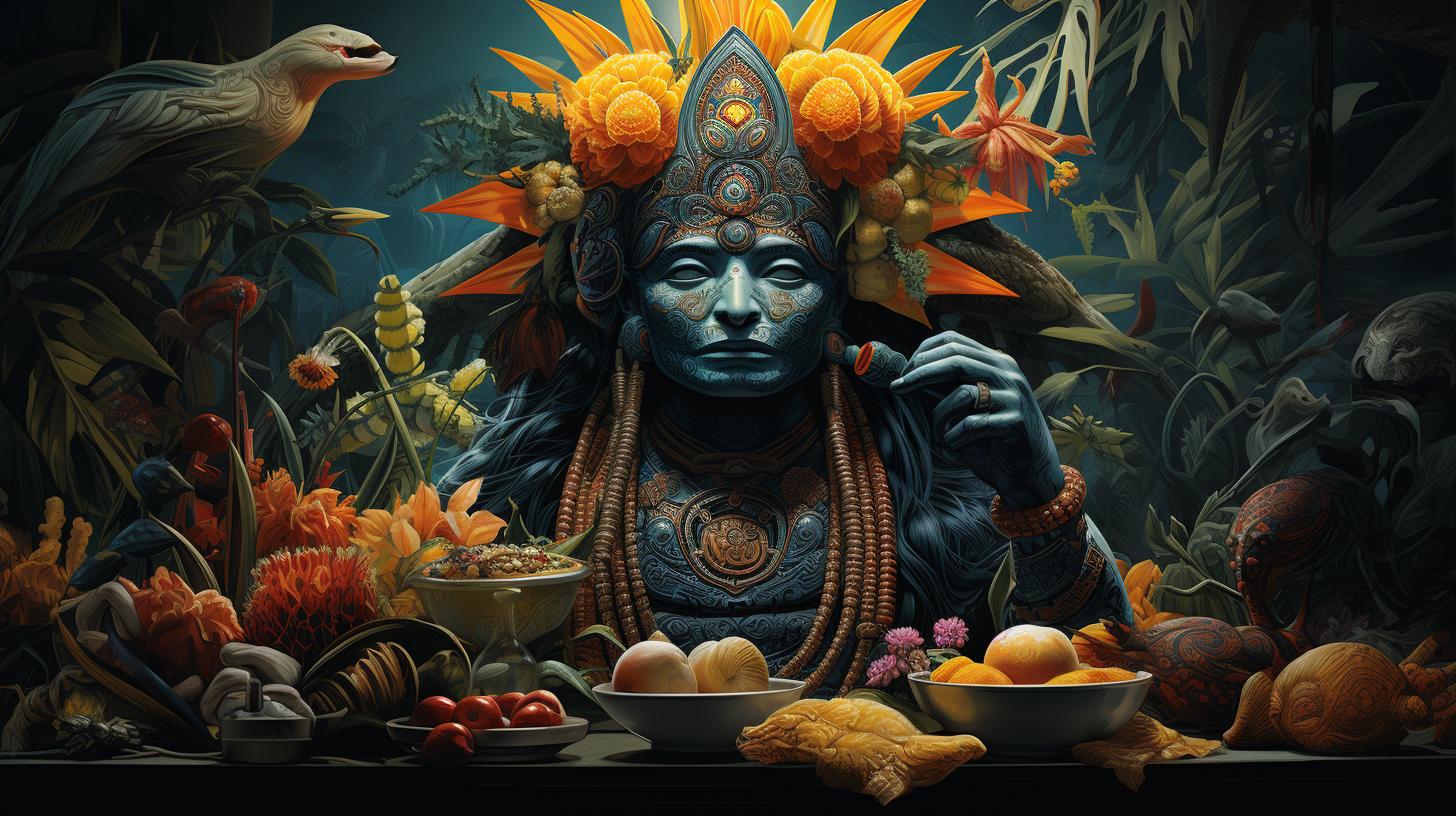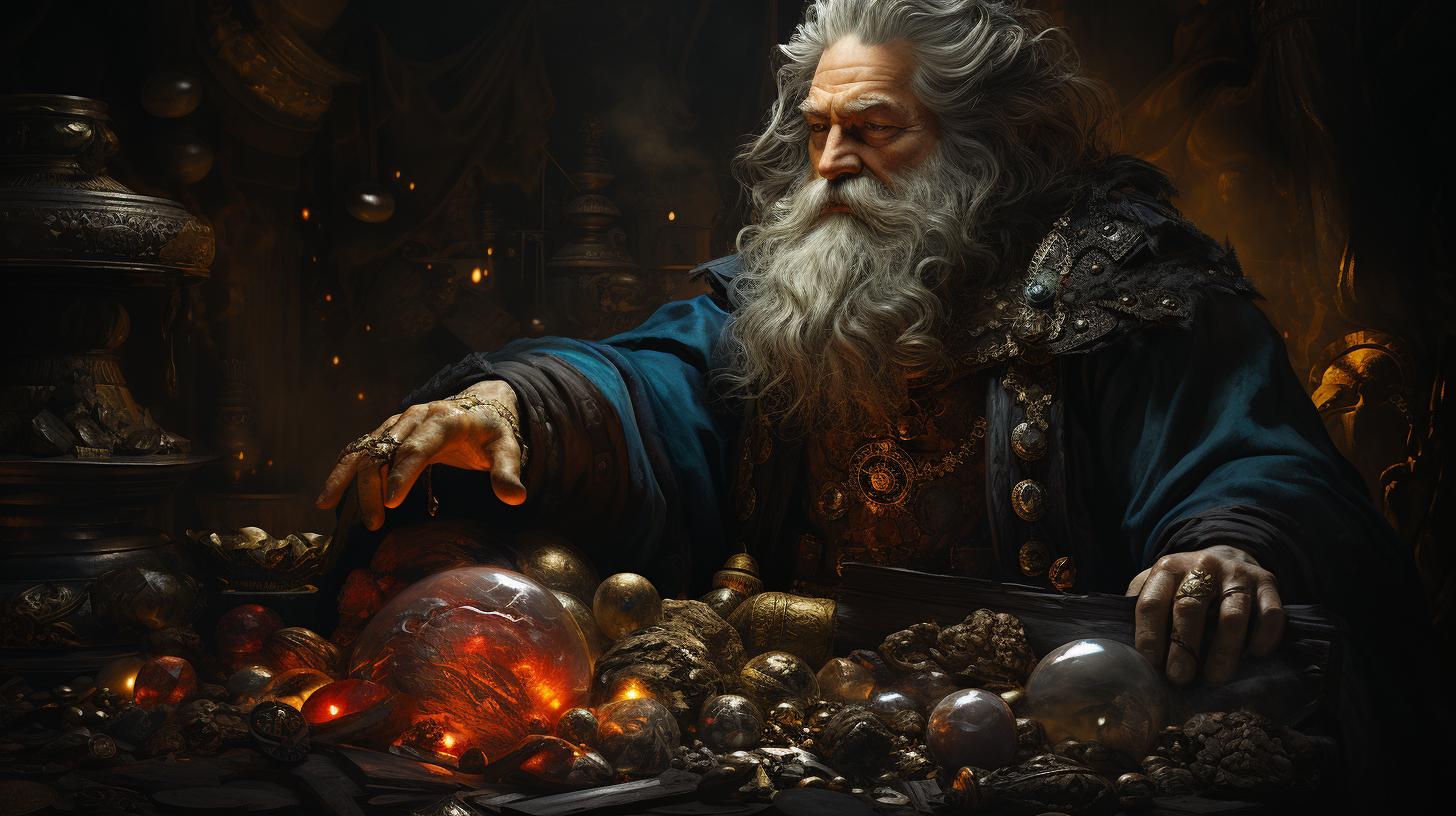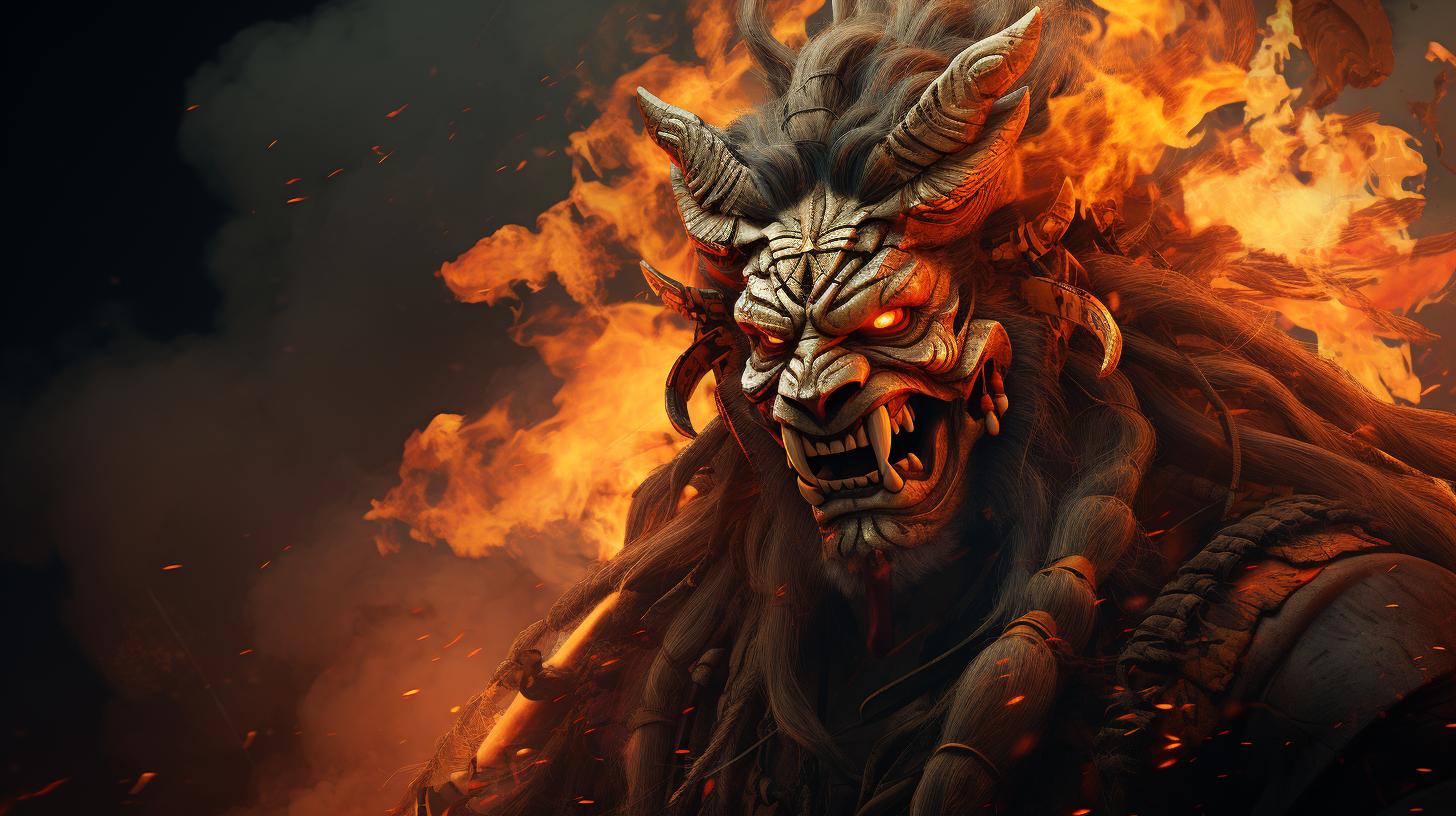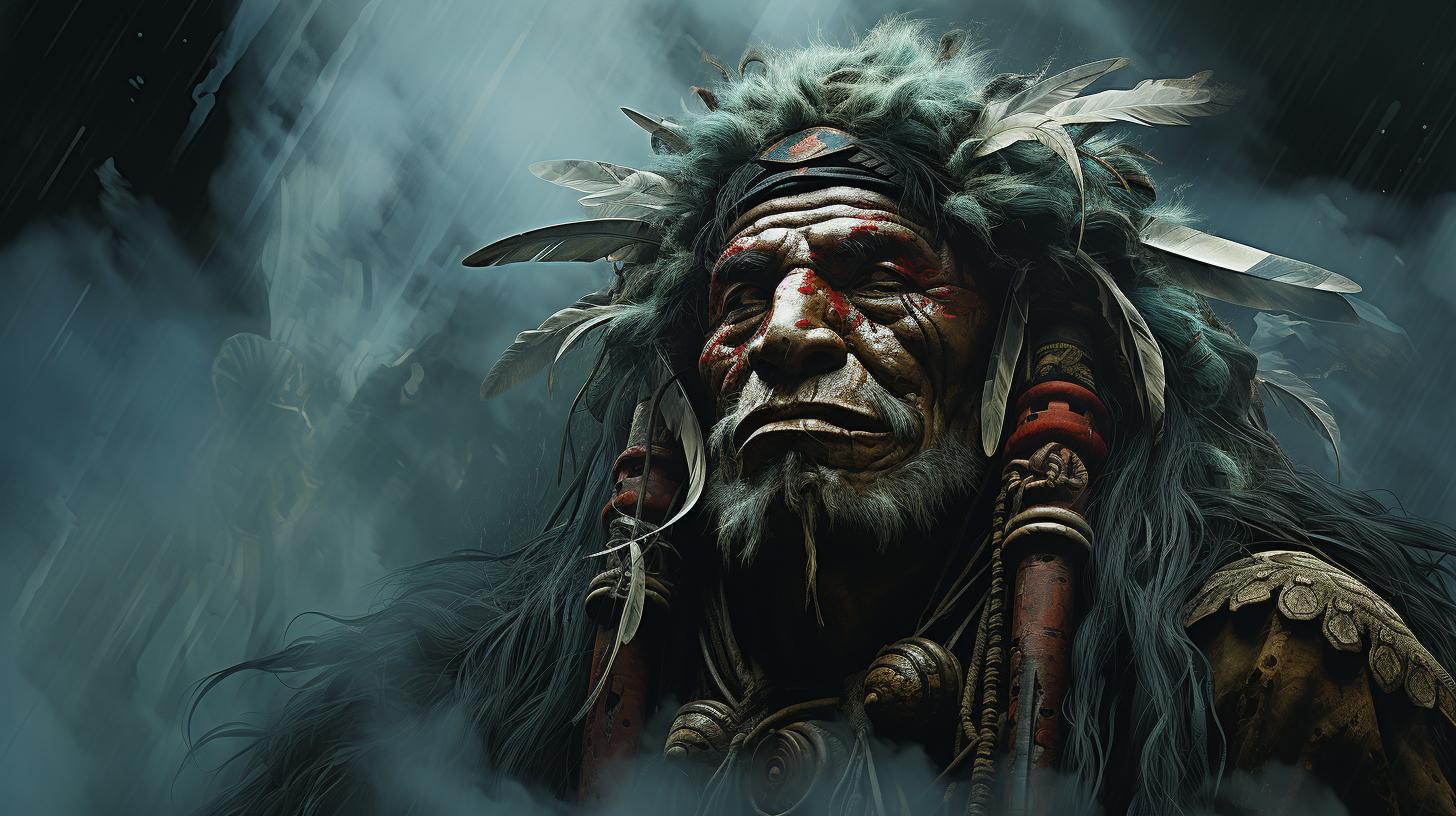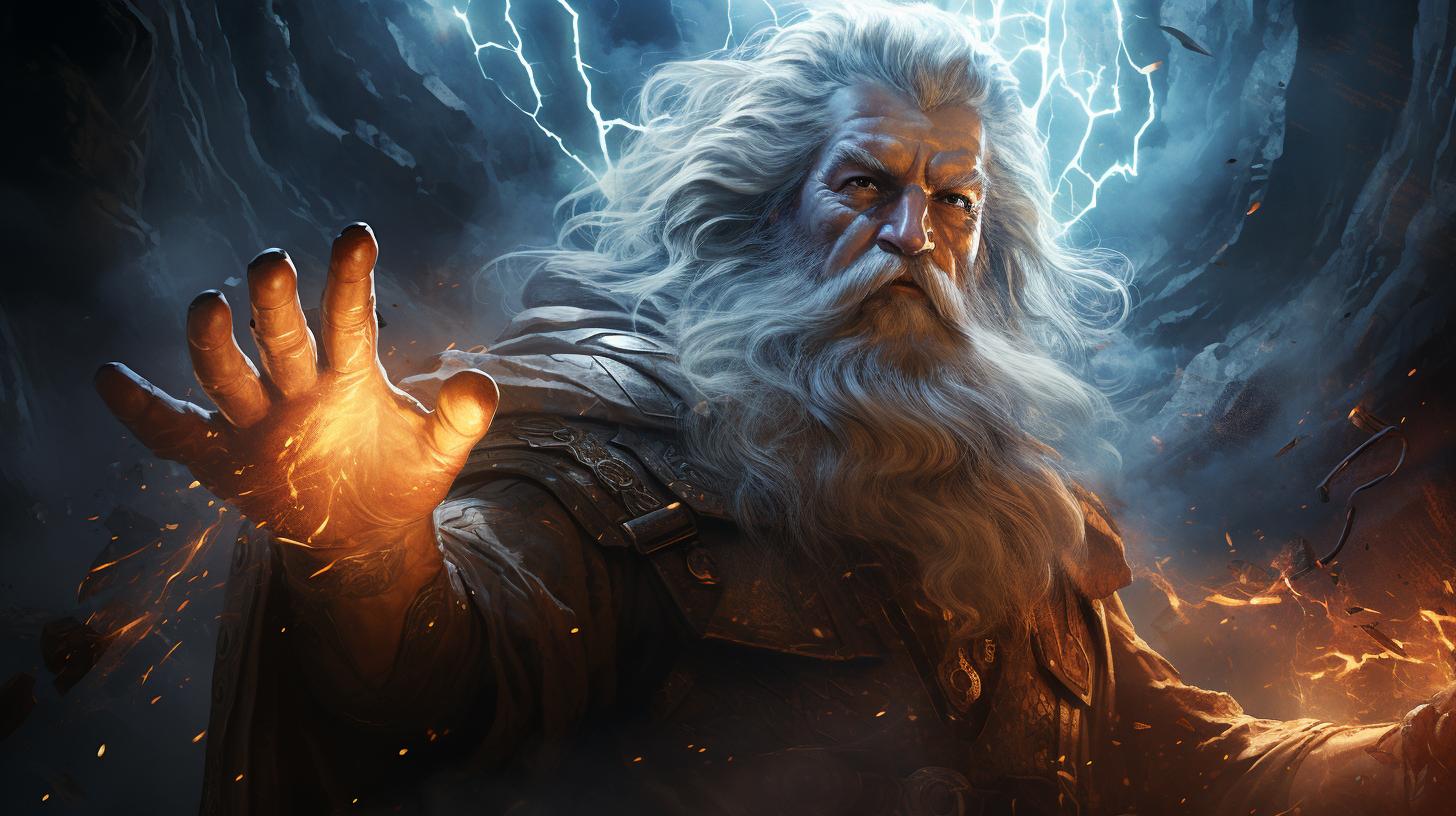Supay Inca: The God of Death in Inca Mythology
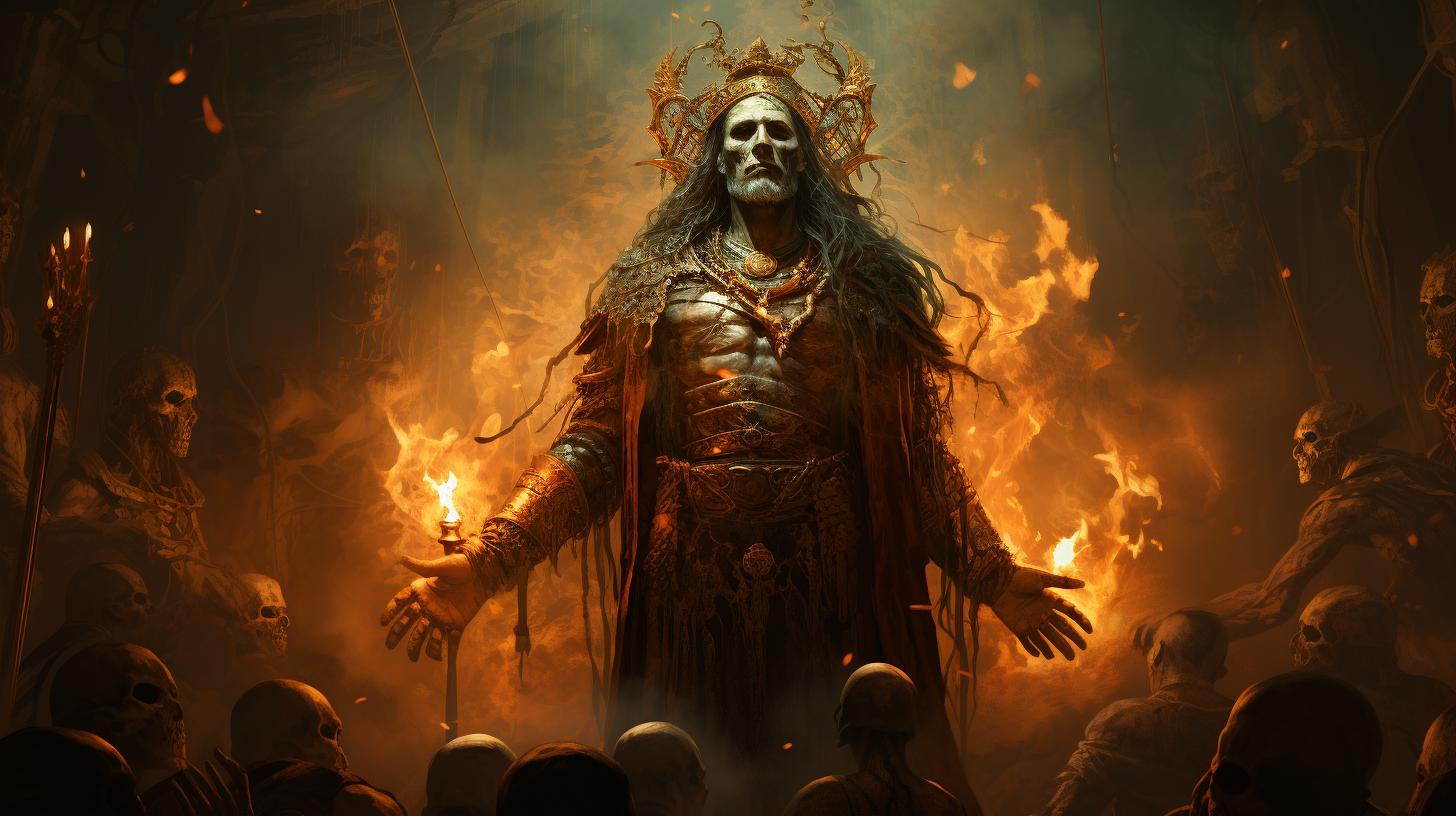
Supay Inca, the god of death in Inca mythology, played a significant role in the ancient Inca culture. Represented as a fearsome figure with a jaguar head and the ability to shape-shift, Supay was associated with the underworld known as Uku Pacha.
Inca rituals linked to Supay were closely tied to miners and agricultural workers. Despite the influence of Spanish colonization and Christian beliefs, the indigenous people of Peru continued to invoke Supay for protection.
Additionally, Supay remains a prominent figure in Andean carnivals, particularly in Bolivia, Chile, and Peru.
In Inca mythology, Supay Inca holds a significant role as the god of death. Revered and feared, Supay was believed to govern the underworld and lead a race of demons.
Despite the association with the Christian devil following the arrival of the Spanish, indigenous peoples continued to invoke Supay for protection and guidance.
The representation of Supay Inca is striking and terrifying.
Depicted with a jaguar head, long horns, and a puma-like body, Supay was also known for his shapeshifting abilities. He could transform into both a handsome Inca man or woman and any animal of his choosing.
The realm over which Supay ruled, known as Uku Pacha, was considered a place of pain and suffering. However, the Inca did not view it negatively, as they believed the underground water of Uku Pacha to be a source of life and a connection between the human world and the inner world.
Supay’s influence extended beyond mythology and had practical implications for certain professions. The rituals associated with Supay were closely linked to miners and agricultural workers, reflecting the deity’s connection to these industries.
Despite the destruction of the Inca Empire and the dominance of the Catholic Church, the belief in Supay persisted among indigenous Peruvians. While the figure of Supay merged with the concept of the Christian devil, his worship continues to be practiced by miners and excavators.
Additionally, Supay remains a central character in the ‘Diablada’ of the Andean carnival celebrated in Bolivia, Chile, Peru, and other countries.
Supay’s domain over death and his association with mining and traditional agriculture have remained central aspects of his mythology.
Even in the present day, the significance and cult of Supay continue to endure.
Origins and Significance of Supay in Inca Culture
Supay, the god of death in Inca mythology, held great importance in Inca culture. Understanding the origins and significance of Supay helps shed light on the beliefs and practices of the ancient Inca civilization.
Supay’s origins can be traced back to the Inca creation myth. According to Inca beliefs, Supay was one of the primordial deities who played a key role in the formation of the world and the creation of humanity.
As the ruler of the underworld, Supay held tremendous power over life and death.
Inca society perceived death not as an end but as a transition to a different realm. Supay represented this transition and was revered as the deity who facilitated the journey of the soul from the earthly realm to the afterlife.
His significance extended beyond death; Supay was also associated with agriculture and mining, as these were the primary livelihoods of the Inca people.
The role of Supay in Inca culture was closely intertwined with their agricultural practices.
The Inca believed that Supay controlled the fertility of the land and influenced the growth of crops. They conducted rituals and offered sacrifices to appease Supay for bountiful harvests and protection from natural disasters.
Additionally, Supay held a prominent place in the lives of miners. As the god of the underground, he was believed to control the rich mineral resources found beneath the Earth’s surface.
Miners sought Supay’s favor to ensure their safety and success in their mining endeavors.
The significance of Supay’s representation cannot be overlooked. Depicted as a fearsome figure with a jaguar head, long horns, and a puma body, Supay embodied the power and mystery associated with death and the underworld.
His ability to shape-shift into different forms further emphasized his connection to the natural world.
In conclusion, Supay’s origins and significance in Inca culture are deeply rooted in their beliefs about death, the afterlife, agriculture, and mining.
Understanding the role of Supay provides valuable insights into the ancient Inca civilization’s spiritual and cultural practices.
Supay’s Representation and Symbolism
Supay, the god of death in Inca mythology, was depicted as a terrifying figure with a jaguar head, long horns, and a puma body. This representation aimed to evoke fear and awe among the Inca people.
The choice of animal features, such as the jaguar and puma, symbolized Supay’s ferocity and power. The jaguar, known for its strength and cunning nature, represented Supay’s ability to navigate the darkness and hidden realms of the underworld.
In addition to his fearsome appearance, Supay possessed the ability to transform into different forms. He could appear as a handsome Inca man or woman, as well as shape-shift into any desired animal.
This shape-shifting capability symbolized the fluidity and versatility of Supay’s power, allowing him to adapt to different situations and deceive those who encountered him.
The symbolism of Supay went beyond his physical representation. As the god of death, Supay embodied the inevitable cycle of life and death. His association with the underworld, Uku Pacha, emphasized the transformative nature of death and its connection to the cycle of rebirth.
The Inca people believed that the subterranean waters of the Uku Pacha were a source of life, linking the human world to the mystical realm of the interior.
Supay’s representation and symbolism played a significant role in shaping the beliefs and rituals of the Inca society. His fearsome appearance and transformative powers served as a reminder of the uncertainty and transitory nature of life.
The Inca people revered Supay, understanding that death was an integral part of the natural order and that Supay held the key to the transition between worlds.
Supay and the Inframundo: Uku Pacha
Supay, the Inca god of death, was closely associated with the Uku Pacha, the underworld in Inca mythology. Uku Pacha was believed to be a place of suffering and pain, but the Inca people did not view it as a negative concept.
They believed that the underground water in Uku Pacha was a source of life and served as a connection between the human world and the inner world.
The Inca mythology depicted Supay as the ruler of this dark realm. He held dominion over the souls of the deceased and was responsible for guiding them through the afterlife.
Supay’s role in the Uku Pacha was significant, as he determined the fate of the departed souls, leading them to their final resting place.
In the Inca culture, rituals and offerings were made to Supay to honor and appease him. The rituals associated with Supay often involved miners and agricultural workers, as they sought his protection and guidance in their hazardous professions.
These individuals believed that Supay had the power to bring prosperity and abundance to their endeavors.
The connection between Supay and the works of mining and agriculture was deeply rooted in Inca society. It emphasized the importance of these activities in the Inca civilization and highlighted Supay’s influence over life and death in these domains.
The miners and agricultural workers relied on Supay’s guidance and blessings for a successful harvest or a fruitful mining expedition.
Even after the decline of the Inca Empire and the influence of Christianity, the belief in Supay persisted among the indigenous people of Peru. Although Supay became fused with the concept of the Christian devil, his cult and reverence endured among miners and excavators.
Today, Supay remains a central figure in the traditional ‘Diablada’ dance during carnivals in Bolivia, Chile, Peru, and other Andean countries, symbolizing the ongoing relevance and cultural significance of this Inca deity.
Supay’s Role in Inca Rituals and Beliefs
In Inca culture, Supay played a significant role in rituals and religious beliefs. He was regarded as the god of death and the ruler of the Uku Pacha underworld. In these rituals, Supay was invoked and pleaded for protection by the indigenous people, even after the arrival of the Spanish and the association of Supay with the Christian devil.
Supay’s rituals had close associations with miners and agricultural workers, reflecting the importance of these professions in Inca society. It was believed that Supay exerted control over the earth, its resources, and the cycles of life and death.
Therefore, miners and farmers sought his favor and guidance in their respective endeavors.
Supay was often depicted in a terrifying form, with a jaguar head, long horns, and a puma body.
However, his shape-shifting abilities allowed him to appear as a handsome Inca man or woman, as well as transform into any desired animal. This transformative power symbolized his control over life and death, able to move between realms and assume different forms.
The Uku Pacha, the underworld governed by Supay, was perceived as a place of suffering, yet the Inca people did not view it negatively. They believed that the subterranean water in this realm was a source of life, connecting the human world with the inner world.
This belief emphasized the cyclical nature of life and death, and the interconnectedness of the spiritual and material realms.
Despite the influence of Spanish colonization and the dominance of the Catholic Church, the belief in Supay persevered among the indigenous Peruvians.
The figure of Supay became fused with the concept of the Christian devil, but his worship and practices persisted, especially among miners and excavators. In fact, Supay is the central character in the ‘Diablada’ of the carnival celebrated in Bolivia, Chile, Peru, and other Andean countries.
Supay’s significance in Inca mythology, particularly his dominion over death and his association with mining and traditional agriculture, has endured to the present day. His role in rituals and beliefs continues to be celebrated and honored by those connected to these industries, as well as in cultural festivities that pay homage to the rich heritage of the Andean peoples.
Supay’s Connection to Miners and Agricultural Workers
In Inca mythology, the god of death, Supay, had a significant connection to miners and agricultural workers. These two professions held great importance in the Inca society, and Supay was believed to have influence over their well-being and productivity.
Miners, who extracted valuable resources from the earth, relied on Supay for protection and guidance in their dangerous endeavors. They would often perform rituals and make offerings to Supay before entering the depths of the mines, seeking his favor and assistance in ensuring their safety and a successful extraction of minerals.
Agricultural workers, who cultivated the land and were responsible for nourishing the Inca population, also turned to Supay for blessings and abundant harvests. They recognized Supay as a deity connected to the fertility of the earth and the cycle of life and death.
Rituals dedicated to Supay were performed during planting and harvesting seasons to seek his favor and ensure a fruitful yield.
Supay’s association with miners and agricultural workers highlights the profound relationship between the divine and the everyday lives of the Inca people.
It underscores their deep understanding of the interconnectedness between human labor and natural forces, as well as their belief in the divine’s ability to influence and support their work.
Even in contemporary times, remnants of Supay’s connection to these professions can be observed.
In certain regions of Peru, traditional mining practices continue, and miners still invoke Supay for protection before going underground. Similarly, indigenous agricultural communities in the Andean region maintain their reverence for Supay, incorporating rituals and offerings into their agricultural practices.
Supay in Indigenous Peruvian Beliefs and Contemporary Practices
In indigenous Peruvian beliefs, Supay, the god of death in Inca mythology, holds a significant place. Despite the influence of Spanish colonization and the fusion of Supay with the Christian devil, the belief in Supay has persisted among the indigenous communities of Peru.
These communities continue to invoke Supay and seek his protection, particularly those engaged in mining and agriculture.
Supay’s association with death and the underworld resonates deeply with the indigenous people’s customs and spiritual practices.
They view the Uku Pacha, the realm of Supay, not as a negative concept but as a place from where life originates. According to Inca cosmology, the underground water of Uku Pacha is believed to be a source of life and acts as a bridge between the human world and the inner world.
Indigenous Peruvians maintain a deep connection with the ancient Inca practices and rituals related to Supay. In these ceremonies, they pay homage to Supay, seeking his guidance and protection. The rituals often involve offerings and prayers to ensure the well-being of the community and a harmonious relationship with nature.
Furthermore, contemporary practices involving Supay are still observed in certain Peruvian communities. The figure of Supay is central to the traditional Diablada dance performed during carnival celebrations in Bolivia, Chile, Peru, and other Andean countries.
This dance represents the eternal struggle between good and evil, with Supay embodying the dark forces that must be conquered.
By keeping the belief in Supay alive, indigenous Peruvians honor their ancestral traditions and maintain a sense of cultural identity.
Supay’s role in their lives serves as a reminder of the ongoing connection between the spiritual and natural realms, and the importance of respecting and harmonizing with the forces beyond our immediate perception.
The Fusion of Supay and Christian Devil in Spanish Colonization
During the period of Spanish colonization in South America, the indigenous belief system, including the worship of Supay, collided with the arrival of Christianity. The Spanish colonizers saw Supay as a representation of the devil, and they sought to suppress indigenous practices and impose their own religious doctrines.
This fusion of Supay with the Christian devil had a profound impact on the perception and interpretation of Supay in the region. The indigenous people were forced to reconcile their traditional beliefs with the newly introduced Christian concepts of evil and the devil.
As a result, Supay became associated with the Christian devil in the eyes of the colonizers, and this association continues to persist in some aspects of contemporary understanding.
Supay’s Dual Identity
Supay’s fusion with the Christian devil created a dual identity that persists to this day.
In indigenous Peruvian beliefs, Supay retains his role as the god of death and ruler of the underworld. However, in the colonial and post-colonial context, Supay also became synonymous with the devil of Christian theology.
Suppression and Persistence
Despite the efforts of the Spanish colonizers to suppress indigenous beliefs and practices, the worship of Supay persisted clandestinely among the indigenous populations. It adapted and hid within the Christian rituals and ceremonies, allowing the traditions surrounding Supay to survive.
Contemporary Practices
Today, the fusion of Supay and the Christian devil can be seen in various cultural practices, particularly during the celebrations of Andean carnivals. The Diablada, a traditional dance in Bolivia, Chile, Peru, and other Andean countries, prominently features Supay as a central character, blending indigenous beliefs with Christian symbols.
The Diablada: Supay in Andean Carnivals
The Diablada is a traditional dance and theatrical performance that takes place during Andean carnivals in Bolivia, Chile, Peru, and other countries in the region. It holds significant cultural and religious importance, with Supay playing a central role in the festivities.
The Diablada, which means “dance of the devils” in Spanish, showcases a vibrant display of colorful costumes, masks, and choreography. The performers, known as diablitos or “little devils,” represent various mythological and supernatural beings, including Supay.
During the Diablada, Supay is portrayed as a powerful and revered character. Dancers don intricate costumes adorned with images of the god of death, incorporating elements such as jaguar heads, long horns, and puma-like bodies.
These costumes symbolize the fearsome and transformative nature of Supay.
The dance performance itself tells a story that intertwines ancient Andean beliefs with the arrival of the Spanish conquistadors. It represents the ongoing struggle between the indigenous people and the forces of colonization.
Supay’s presence in the Diablada represents a connection to pre-Hispanic beliefs and a resistance to European influences.
Through the Diablada, communities honor Supay, paying tribute to the god of death and his enduring significance in Andean culture.
It is a celebration of identity, heritage, and the resilience of indigenous traditions in the face of centuries of external influences.
Today, the Diablada remains an integral part of Andean carnival festivities.
It is a vibrant and captivating display of culture, attracting both local and international spectators. In recognizing the impact of Supay’s mythology on the indigenous communities, the Diablada serves as a testament to the enduring spiritual connection between the people and their beliefs.
Common Myths and Misconceptions about Supay
Supay, the Inca god of death, has been subject to various myths and misconceptions throughout history. Let’s explore some of the most common misunderstandings surrounding Supay.
- Supay is not purely an evil entity: Despite being associated with death and the underworld, Supay is not solely a malevolent figure.
In Inca mythology, death was seen as a natural part of the cycle of life, and Supay played a crucial role in maintaining that balance.
- Supay is not the sole representative of the devil: Due to the influence of Spanish colonization and the merging of indigenous beliefs with Christian concepts, Supay has often been equated with the devil.
However, it is important to understand that Supay predates the arrival of Christianity in the Andean region and had its own distinct significance.
- Supay is not solely associated with suffering: While the Uku Pacha, the Inca underworld ruled by Supay, was considered a place of pain and anguish, it was also believed to hold the vital subterranean water that connected the human world with the inner world.
This water was seen as a source of life and fertility, indicating a more complex understanding of Supay’s realm.
- Supay does not exclusively punish the wicked: Contrary to popular belief, Supay’s role was not solely to punish the sinful.
In Inca mythology, Supay also offered protection and guidance to those who invoked him, demonstrating a multifaceted nature that goes beyond mere judgment.
- Supay is not limited to Inca culture: While Supay is commonly associated with Inca mythology, his influence extends beyond the Inca civilization.
The worship and belief in Supay can be found among various indigenous groups in Peru and neighboring countries, reflecting his significant presence in Andean spirituality.
By addressing these myths and misconceptions, we can gain a deeper understanding of the complex nature of Supay and appreciate the richness of Andean mythology and beliefs.
Exploring the Impact of Supay’s Domain over Life and Death
Supay, the god of death in Inca mythology, exerted a significant influence over the concepts of life and death in Inca culture. His dominion over the realm of death, known as Uku Pacha, shaped the way the Inca people understood the cycle of life and the afterlife.
Within Inca beliefs, death was not perceived as a purely negative or final event. Instead, it was seen as a transition from one stage of existence to another. Supay’s role in this transition was fundamental, as he guided souls through Uku Pacha, the underworld of pain and suffering.
It was believed that the subterranean waters of this realm held the power of life and connected the human world with the inner realm.
In the context of Inca rituals and ceremonies, Supay’s presence was particularly significant for miners and agricultural workers.
These individuals relied heavily on the earth’s resources, and thus, their connection to Supay was crucial. They sought his protection and blessings for fruitful harvests and safe mining operations.
The impact of Supay’s domain over life and death extended beyond the realms of spirituality and culture.
It also had practical implications for the Inca society. The belief in Supay and the understanding of death as a transformative process influenced the way the Inca approached their own mortality.
It fostered a sense of acceptance and readiness for the eventual journey through Uku Pacha.
Despite the influence of Spanish colonization and the fusion of Supay with the Christian devil, the reverence for Supay has endured among indigenous Peruvian communities.
In contemporary practices, his significance is still recognized, especially by miners and excavation workers who continue to invoke his protection in their dangerous occupations.
In the broader cultural context of the Andean region, Supay is a central figure in the colorful spectacle known as the Diablada.
This vibrant carnival tradition, celebrated in Bolivia, Chile, Peru, and other Andean countries, showcases the ongoing significance of Supay in the lives of the indigenous people.
Overall, Supay’s domain over life and death has left a profound impact on Inca mythology and the understanding of the afterlife.
His role as the god of death, his association with the underworld, and his connection to the livelihoods of miners and agricultural workers highlight the intricate relationship between spirituality, mortality, and daily life in Inca culture.











